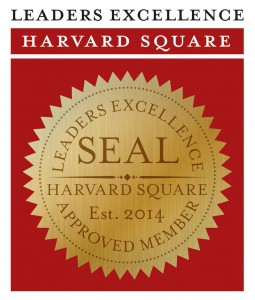Evolution of Leadership- “If your actions inspire others to dream more, learn more, do more, and become more, you are a leader!”
John Quincy Adams
As long as there have been leaders, there have been those who tried to determine how and why they were successful. When we talk about The Evolution of Leadership, Leadership itself has not evolved, but our understanding of it has. It is important to understand why very different leadership styles can be effective, why the same leadership techniques will not work in every situation, and which leadership style fits your personality best. Everyone has leadership potential within them, but understanding these concepts will help you maximize your leadership ability. Welcome to the evolution of leadership.
Defining Leadership
Before we dive into The Evolution of Leadership, It is important to define leadership first. Simply speaking, “leadership” is defined as “the ability to lead.” Unfortunately, this is not very helpful. A better definition comes from the BNET online Business Dictionary: “The capacity to establish direction and to influence and align others toward a common goal, motivating and committing them to action and making them responsible for their performance.” Although this is more descriptive, it is not substantial. It does not tell us what leadership actually is, but rather what it does.
Characteristics of a Leader
The mark of a true leader is not a position or title held, but it is how many people are willing to follow them. Santa Clara University and the Tom Peters group outline the following leadership characteristics:
- Honest
- Competent
- Forward-looking
- Inspiring
- Intelligent
- Fair-minded
- Broad-minded
- Courageous
- Straightforward
- Imaginative
The United States Army offers 11 Leadership Principles:
- Be tactically and technically proficient
- Know yourself and seek self-improvement
- Know your soldiers and look out for their welfare
- Keep your soldiers informed
- Set the example
- Ensure the task is understood, supervised, and accomplished
- Train your soldiers as a team
- Make sound and timely decisions
- Develop a sense of responsibility in your subordinates
- Employ your unit in accordance with its capabilities
- Seek responsibility and take responsibility for your actions
You will notice that none of the above actually tells you how to lead in a practical manner. They don’t address what to do or say in any given situation. That is because there is no real formula to being a leader. Leadership must come from within and it is based on your personality.
A Brief History of Leadership
Evolution of Leadership- Historical Leaders:
Throughout the centuries, there have been leaders. We are social animals who bond together, but we look for order against the chaos of life. Society looks to organize itself to accomplish tasks that individuals cannot perform individually. As a result, someone inevitably ends up in charge.
The evolution of leadership gave rise to different types of leaders. Leaders in the past have generally belonged to one of three categories: Political, Military, or Religious.
- Political: Around 1790 B.C., Babylonian ruler Hammurabi created the codified laws, which unified his empire in what was seen as a fair order as all people were subject to the same rules.
- Military: Sun Tzu was a military general in China from 500 B.C. He wrote The Art of War, and although he was a great military leader, his book is actually about how to not use armies except as a last resort, focusing more on wise political policies and strategies to prevent war.
- Religious: It may be said that religious leaders have had the greatest impact on their societies, with results that last for centuries.
Evolution of Leadership- Modern Leaders:
With the rise of the Industrial Revolution, We have also seen an Evolution of Leadership, a new kind of leader emerged: Economic. The so-called Captains of Industry found they could build an empire based on modern technology instead of swords. Oil barons, railroad magnates, and factory owners amassed large fortunes without relying on armies; often, this occurred at the expense of the people they employed. This situation prompted the emergence of union leaders and various movements aimed at promoting justice where perceived abuses existed.
The Industrial Revolution also increased the number of Scientific Leaders, as scientists now had easy access to a wide range of new materials for their work. Psychiatry and Psychology came into prominence with studies on the workplace, in regards to improving productivity and the effect on the workforce.
Studies have shown consistently that workers are more productive when they are in a “positive work environment.” The attitude and influence of the boss is a major factor in this productivity. If employees feel they are listened to, respected, and treated fairly, they are happier in their work and perform better than those who feel they are disrespected and unappreciated. Which kind of work environment would you prefer?
Three Theories of Leadership
The Great Man Theory:
The Great Man Theory was abandoned in favor of the theories of behavioral science. It’s easy to be inspired by stories of great men and women who did great things in their lives. Alexander the Great conquered the known world. Genghis Khan then ravaged most of it. Abraham Lincoln freed the slaves. Harriet Tubman saved hundreds from slavery in the Underground Railroad. Mother Theresa aided and comforted thousands in Calcutta who were abandoned by society. Theory goes that these people did great things because they were simply great people determined by fate and fulfilling their destiny.
The Trait Theory:
Generally, People often say, “Great leaders are born, not made.” Trait Theory takes this saying literally. If you have the ability to lead, you were born with it, with no way to learn those skills. This theory expands on the Great Man Theory by defining what makes great leaders “great.”
Today, we recognize that true leadership seems to come from a combination of both theories and a wide variety of other leadership qualities. Everyone has some ability in at least one or more of these areas. Consequently, This means that under the right circumstances, anyone can rise to a leadership role and be successful based on the leadership style that best matches their personality if they know how to use that ability to properly address the situation at hand. Other leadership skills can indeed be learned, developed, and mastered.
Transformational Leadership:
In 1978, James MacGregor Burns introduced the idea of transformational leadership as he researched political leaders. Burns theorized that “transformational leadership” is a process where leaders interact with their followers and inspire each other to advance together. Moreover, His characteristics and behaviors demonstrated the differences between “management” and “leadership.” The leadership style and abilities of the leader transform both people and organizations, as the leader conveys a vision and guides the transformation.
Bernard M. Bass, in 1985, added to Burns’ transformational leadership theory by shifting the focus to the followers. It is not the individual traits and vision of the leader that matter as much as it is their ability to influence the feelings, attitudes, and commitment of their followers. As mentioned before in productivity studies, when followers believe they can trust a leader (or even better, when they admire a leader who can inspire loyalty and respect), they exceed their original expectations and do so willingly. Consequently, productivity and unity increase resulting in a charismatic, motivational leader transforming the followers.

To learn more on the topic “Evolution of Leadership”, buy our acclaimed self-directed training manual on Leadership and Influence for only $9.99. Delivered as downloads, it includes the training manual, action plan template, podcast, and digital badge.







One of the prominent trait of leader is to challenge the status quo situation.
Manager manages the given situation while leader challenges the status quo situation & finds new ways/avenues to perform the same task.
Mr Dan, we are looking at ‘leaders’ as being apart from the Group. It should be that any leader is ‘part’ of the Group. This automatically brings about cohesiveness and collaboration. Regarding – Studies have shown consistently that workers are more productive when they are in a “positive work environment.” The attitude and influence of the boss is a major factor in this productivity….I don’t ascribe to this. Work is work, so it has to be done and done to the best of ones ability. We cannot expect that wherever we go we need a “Positive environment’ or be spoon fed someone. We must make things happen and create a positive and happy environment. As an extension to this, I like the 11 principles offered by the US . It makes you think, it challenges you, and it instils in you a sense of confidence and courage to face anything in life and most importantly you get to know ‘Who you are’.
Kind regards.
Full of information and knowledge this post of yours is really very amazing. You have explained everything so well about leadership and the qualities that a perfect leader must hold. This article is a great guide for my brother as he is under a training program where he’s learning these skills so this is helpful for him.
I am looking for the point in history when mankind began to be led or mankind began to follow. Why did a leader step forward? Why did mankind decide to be led? What is the defining moment, need, attribute? I believe it is relevant today to be understood.
This is a great write up truly the unique attribute of a leader is proactiveness and possession of listening art
It’s a great article and very helpful to understand about different leadership quality